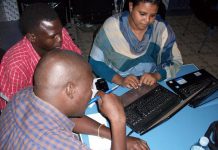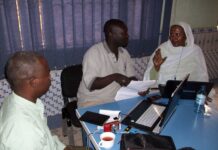
A media organisation must always remain alert to changing audience demand and behaviour. This involves continually examining what is produced to ensure that it is relevant to those who consume it.
There is a danger of losing your audience if you are not adapting in order to hold their attention.
Part of this process might involve revising the current editorial process and/or creating new products to try to both retain the existing audience and attract new listeners, viewers, and readers.
Such a process, done properly, can lead to increased audience engagement and loyalty.
But how can media managers be sure they are creating the right products? And what are the steps they need to take?
Planning a new product
The launch of any media product, whether it’s a new radio or TV programme, a special edition for a newspaper, or a website, needs meticulous research, planning, and, above all, justification.
In this article, the first in a three-part series, we look first at the basics of managing such a project before moving on to a how-to guide setting out what to do if you are planning a relaunch or a new product, and then look at an example of how to set up a new TV programme was successfully launched.
The following principles should be applied by all broadcasters and publishers involved in the process of creating new output. It’s best to make a checklist setting out all the questions that need to be answered. That checklist can be broken down into four areas:
- Defining the target audience.
- Setting out the unique editorial proposition.
- Assessing the cost.
- Calculating the return.
Let’s look at those four areas in more detail.
Define and get to know your target audience
The first question to ask is “Who is it for?”.
You are about to devote considerable time and effort in order to create something new, so you need to know whether anyone will want what you are about to produce.
This is where you need to ensure that what you are creating matches the requirements of your audience.
Our training module about “The value of thorough research for a media business” sets out the steps a media business needs to consider when establishing its position in the local media market.
And then you need to understand the audience you aim to reach with the new product. Our training module “Identifying the target audience and its information needs” will take you through this process.
Set out a clear and unique editorial proposition
The second question is “What are you offering?”.
Before you start you need to set out what is unique about what you are about to produce.
- How will it be different from what the competitors are producing?
- Why would anyone want to listen to your radio station, watch your TV programme, read your magazine, or visit your website?
This is about offering something different; something that not only doesn’t currently exist, but also something that is so unique, fresh and relevant that it sets your media organisation apart from the rest.
Perhaps your differential is in terms of topics covered, the way you treat news, the user engagement and interactivity you offer, the editorial and ethical values you hold dear, your focus on fact-checking, the diversity of voices you include.
Our training module “Establishing a market differential with original journalism”, sets out a way to do this. After reading that module you are ready for step three in the process.
Calculate the cost in terms of money and resources
Next, your media business needs to know whether it can afford to pay for the new content idea.
The first question to consider is whether you can do it with existing resources.
Is there a way of reorganising how you currently do things in order to be able to produce more or different content without having to hire extra staff and equipment?
You will need to look at your current production processes.
In my experience, many new products can be created from existing resources if media managers are prepared to take a fresh look at how news is produced.
Our training module “Creating a converged news operation”, sets out some simple steps that will enable a news organisation to introduce efficiencies which will improve the quantity and quality of output.
This usually involves introducing new workflows and changes to what staff currently do. Our training module “Convergence, workflows, rolls and responsibilities”, shows how this can be implemented.
I have introduced successfully convergence models in Africa, Asia, the Middle East, SE Europe, and the CIS. In every case duplication of effort has been eliminated and productivity has been increased – and all from existing resources.
Once you have taken a fresh look at how your newsroom works, and you know more how you can exploit existing resources for maximum gain, you are ready to move on to the next step.
Understand the sources of revenue
The final point is about how to make money from the new programme, edition, or website. You need to know which advertisers / sponsors will want to be associated with what you are creating?
And, although I have listed this as point four, it would make sense to start thinking about this at the start of the process during the audience identification stage.
Our training module “How to develop a media sales strategy” sets out some simple steps which, if followed, should help you monetise the new product, cover your costs, and enable you to start thinking about how to expand your media business further.
In the second article in this series, Bob Eggington sets out a “How-to of media project management” listing the practical steps required. The third article, also written by Bob, looks at “A practical example of media project management”, in which he shares a case-study of a programme he has implemented.
Lesson plan for trainers
If you are a trainer of journalists we have a free lesson plan: Project management for journalists which you are welcome to download and adapt for your own purposes.









